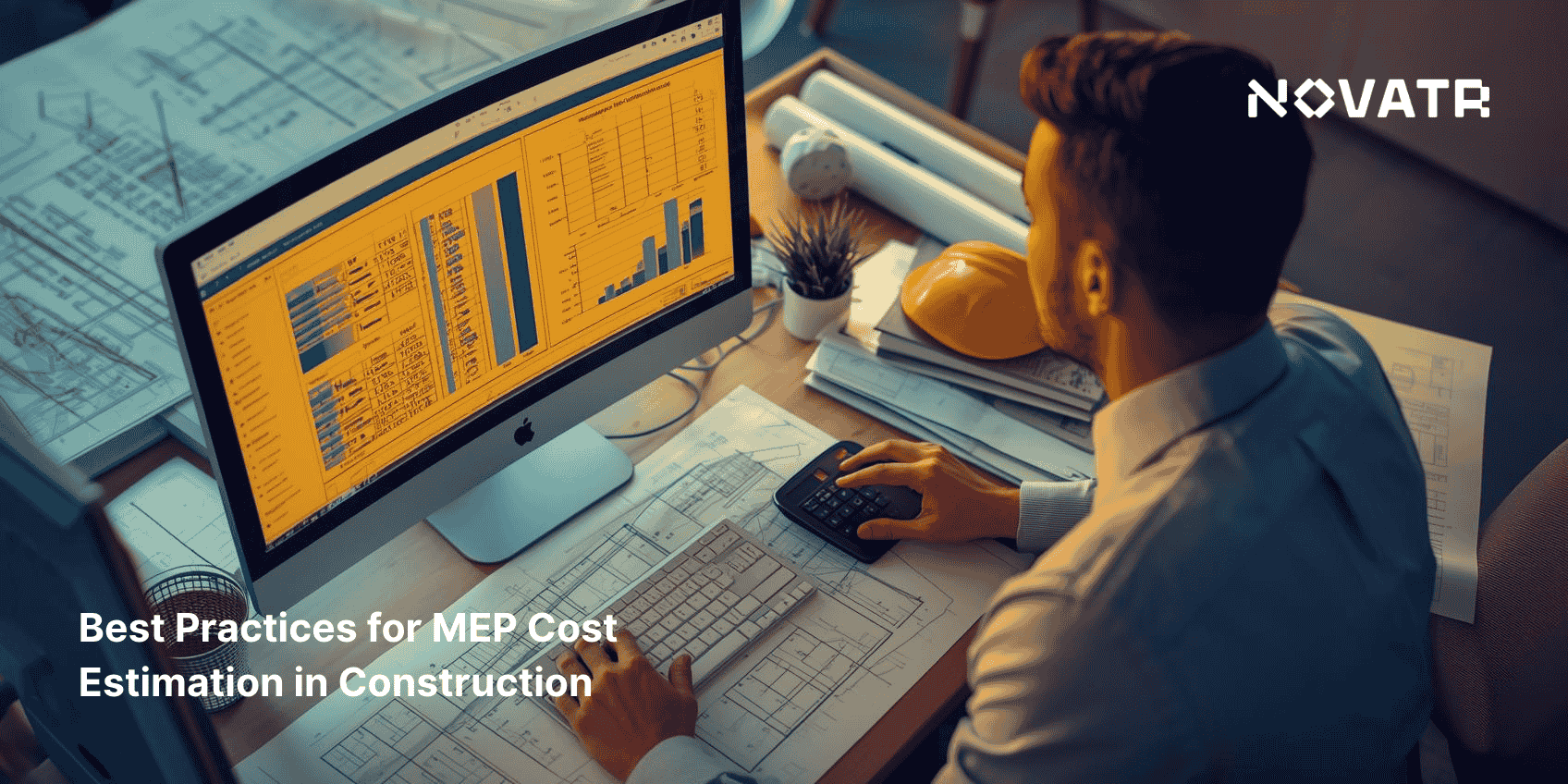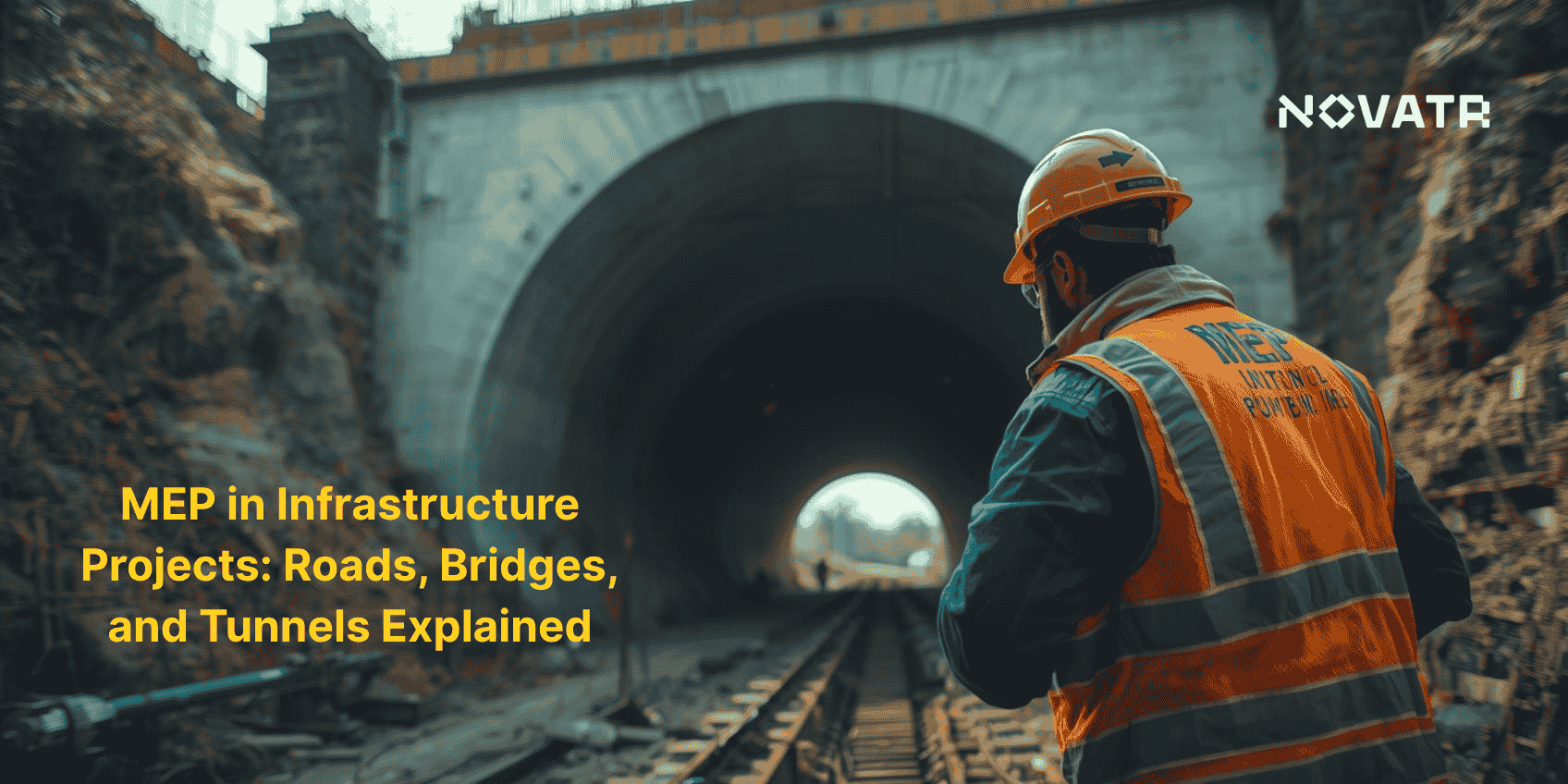
Accurate MEP cost estimation ensures budgets stay realistic and resources are allocated efficiently across HVAC, plumbing, and electrical systems. In the USA, the average MEP engineer salary of $8,479 per month highlights the level of expertise involved in precise planning. Applying these insights supports effective project cost control strategies, reducing unexpected costs and keeping budgets on track.
Structured estimation practices enhance decision-making and minimize errors, enabling better planning for labor and materials. Leveraging historical data, detailed assessments, and thorough reviews improves construction project efficiency. Integrating these approaches with digital tools allows teams to align budgets with actual costs, optimize resources, and deliver projects that meet both financial and operational expectations.
Key Factors Affecting MEP Cost Estimation

Reliable MEP cost estimation relies on recognizing how interconnected design and execution choices shape overall project expenses. Maintaining detailed documentation, monitoring performance data, and applying timely adjustments helps ensure cost stability throughout each phase. These methods enhance forecasting accuracy and strengthen understanding of how to estimate costs for HVAC, plumbing, and electrical systems effectively.
Understanding the key influences on MEP cost estimation:
-
Early coordination among architects, engineers, and contractors ensures alignment of system layouts and prevents costly rework.
-
Comprehensive MEP design budgeting allows better control of financial targets through detailed component evaluation and material selection.
-
Market fluctuations in material prices directly impact project estimates, requiring timely data updates and supplier comparisons.
-
Regional labor rates and skill availability affect overall installation costs, influencing the balance between quality and budget.
-
Adopting digital estimation tools enhances accuracy by linking design data with real-time pricing information and construction schedules.
-
Integration of HVAC, electrical, and plumbing cost estimation with sustainable planning ensures energy-efficient systems are implemented without exceeding overall project budgets.
Best Practices to Improve Accuracy and Reduce Errors in Cost Estimation
Precise cost estimation depends on consistent methodologies, careful review, and disciplined monitoring across all project stages. Maintaining clear documentation and evaluating data systematically reduces errors and ensures budgets reflect actual design and construction needs. These practices also improve understanding of building services cost analysis, supporting reliable financial planning.
Here are the best practices to strengthen accuracy and reduce errors in cost estimation:
1. Conduct Comprehensive Data Verification
Checking historical project data, labor rates, and material costs ensures all assumptions are accurate and grounded in reality. Regular cross-checking of figures helps identify errors early, preventing costly mistakes. This practice enhances overall precision and helps in reducing cost overruns in MEP engineering, keeping estimates aligned with real data and enabling teams to maintain budget control and make reliable financial decisions.
2. Implement Standardized Estimation Templates
Standardized templates simplify estimation by ensuring consistency, minimizing errors, and enhancing team collaboration. This method supports accuracy and efficient tracking of resources, labor, and materials, strengthening overall project planning while enhancing how to improve cost efficiency in building services in a systematic, professional manner.
3. Integrate Design Reviews Early
Incorporating design reviews at early project stages identifies potential scope gaps or conflicts before construction begins. Collaboration among engineering, procurement, and project teams ensures estimates reflect practical requirements. Early review mitigates risk of cost deviations and delays, while providing a foundation for informed decision-making, reinforcing the importance of cost control in sustainable construction through proactive evaluation of systems and resources.
4. Leverage Digital Cost Estimation Tools
Adopting digital tools enhances calculation accuracy and streamlines data management for complex MEP systems. Automated updates, real-time pricing, and integrated reporting reduce human error and improve transparency. Utilizing these tools ensures estimates remain current and precise, giving teams actionable insights and strengthening processes to forecast expenses for complex MEP systems effectively.
5. Perform Risk and Contingency Analysis
Systematically evaluating potential risks and including contingency allocations accounts for uncertainties such as labor delays or material price changes. This proactive approach ensures estimates are realistic and resilient to unexpected variations. Incorporating risk and contingency planning enhances overall cost accuracy and provides insight into how MEP engineers handle project cost uncertainties, creating a structured framework to manage unforeseen events effectively.
6. Continuous Training and Skill Development
Regular professional development equips estimation teams with up-to-date knowledge of industry standards, cost estimation software, and evolving best practices. Skilled personnel contribute to higher accuracy, fewer errors, and improved consistency in estimations. Ongoing training fosters a culture of precision and accountability, supporting sustainable construction cost planning and ensuring projects remain aligned with financial and operational goals.
Also Read: BIM Mep Engineer vs Electrical Engineer Salary, Expertise & Skills
How BIM Aids in Streamlining MEP Cost Estimation and Budgeting

BIM technology enables better coordination and visibility across design and construction processes. By integrating data from various disciplines, it allows teams to anticipate costs, optimize resources, and reduce estimation errors. Implementing BIM practices also enhances collaboration and supports informed decision-making for MEP project planning, resulting in more accurate and reliable budgeting outcomes.
BIM offers multiple ways to improve efficiency and precision in MEP cost estimation and budgeting:
-
Centralized Model Integration: Combines all MEP systems into a single model, improving clarity and reducing conflicts during estimation.
-
Clash Detection and Coordination: Identifies and resolves potential design clashes early, minimizing errors and costly revisions.
-
Real-Time Cost Updates: Links model changes with cost databases, ensuring estimates reflect current pricing and conditions using MEP software.
-
Automated Quantity Takeoffs: Generates precise material and component quantities directly from the model, saving time and effort.
-
Enhanced Collaboration and Communication: Facilitates data sharing across teams, improving coordination and reducing miscalculations in project budgets using BIM for MEP engineers.
-
Improved Financial Forecasting: Supports scenario analysis and cost simulations, aiding accurate financial planning in construction for better budget control.
Conclusion
Effective MEP cost estimation is essential for maintaining accuracy, controlling resources, and supporting reliable construction budgeting. By applying structured practices, using digital tools, and integrating data across project phases, teams can reduce errors, anticipate financial variations, and improve overall efficiency. Clear documentation, risk analysis, and ongoing monitoring ensure projects remain aligned with planned budgets and operational goals.
Programs like the BIM Course for MEP Engineers offered by Novatr provide advanced insights into integrating BIM for improved estimation and coordination. For further guidance and resources on cost planning, budgeting, and MEP project management, visit our dedicated resource page to explore detailed materials that support accurate and efficient MEP cost estimation practices.
FAQs
1. What are the key factors to consider when estimating MEP project costs?
Ans: Estimating MEP project costs requires analyzing labor rates, material prices, and system complexity. Coordination between HVAC, electrical, and plumbing elements also affects accuracy, while historical data and market trends provide context for reliable budgeting decisions.
2. How can BIM help improve accuracy in MEP cost estimation?
Ans: BIM integrates all MEP systems into a single digital model, allowing teams to visualize designs and detect clashes early. It also automates quantity takeoffs and links with cost databases, ensuring estimates reflect real-time information and improving overall precision.
3. How often should MEP cost estimates be updated during a project?
Ans: MEP cost estimates should be revised at major project milestones and following any design changes. Updates are also necessary when labor rates or material prices fluctuate. Consistent adjustments help maintain alignment with actual project conditions. This practice ensures accurate budgeting and reduces the risk of cost overruns.
Was this content helpful to you



.jpg)

.png)
.png)
